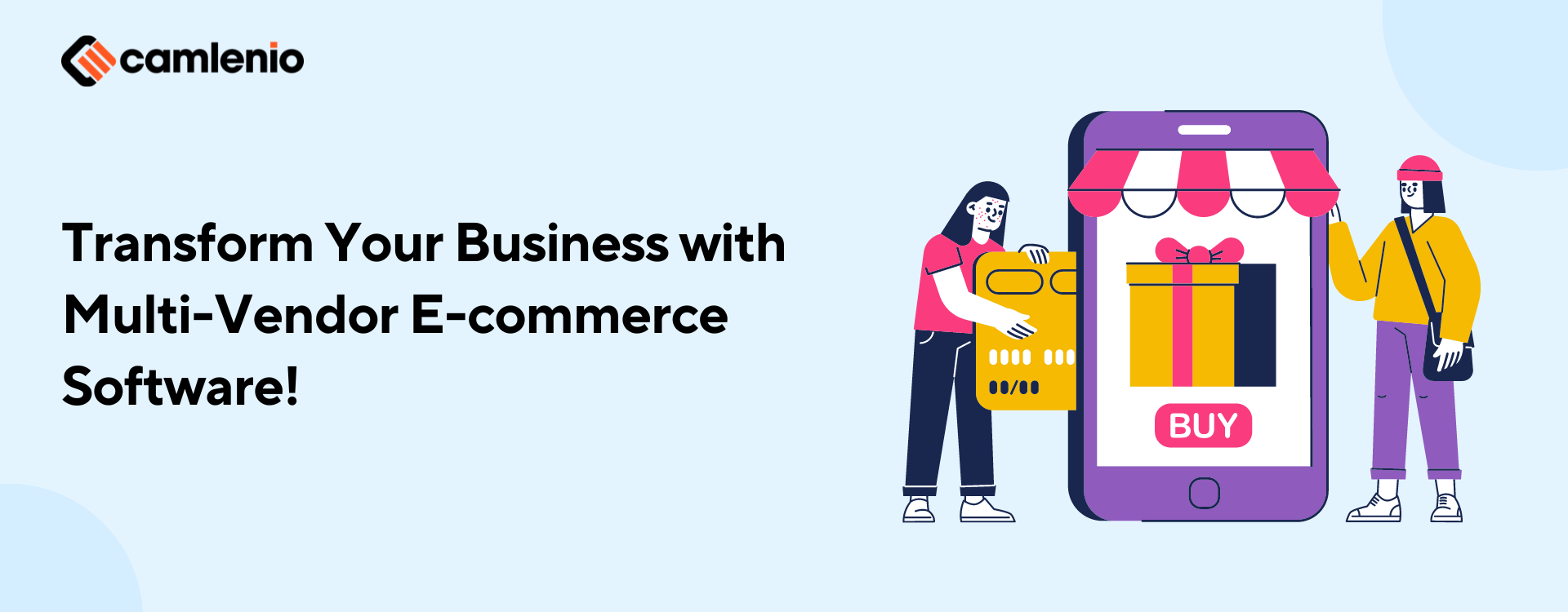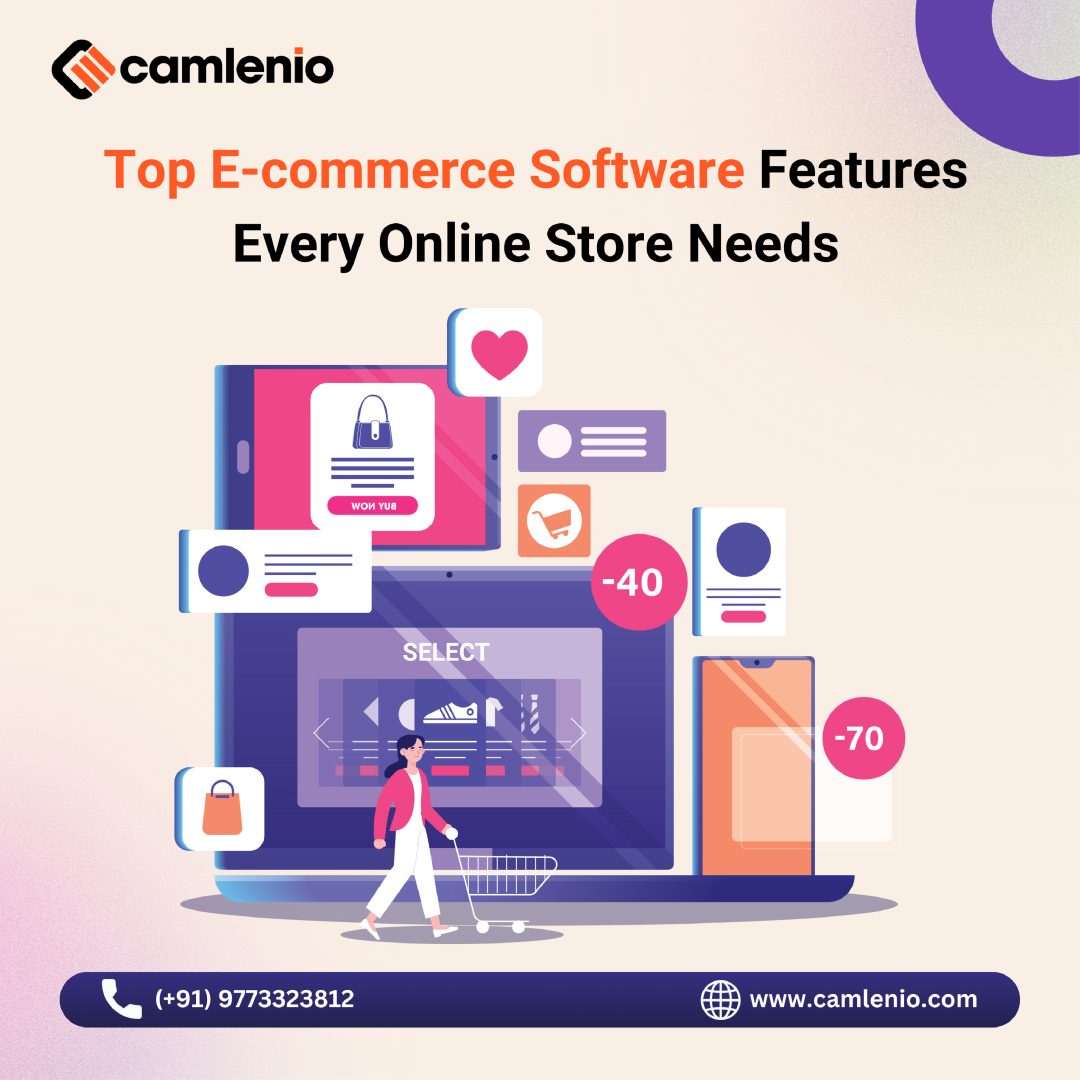
In the fast-paced world of e-commerce, the success of online marketplaces hinges on their ability to provide a seamless and efficient platform for buyers and sellers. E-commerce Multi-Vendor Software has emerged as a game-changer, empowering entrepreneurs to create and manage their own online marketplace with ease and flexibility.
At Camlenio, we understand the unique challenges faced by e-commerce entrepreneurs. That’s why we have developed a robust Multi-Vendor Software solution that caters to the diverse needs of online marketplaces, offering a plethora of features and tools to streamline operations and enhance the shopping experience for customers.
Our software is also highly customizable, allowing you to brand your marketplace and create a unique identity that sets you apart from the competition. With a range of customization options available, you can tailor the look and feel of your marketplace to reflect your brand image and appeal to your target audience.
What is Multi-Vendor E-commerce Software?
Multi-vendor e-commerce software is a robust platform that allows multiple vendors to sell their products or services on a single online marketplace. This software enables businesses to create a virtual shopping mall where various vendors can set up their individual stores, list their products, and manage their orders and inventory. Customers visiting the marketplace can browse through a wide range of products from different vendors, compare prices and offerings, and make purchases from multiple sellers in a single transaction.
The software typically includes features such as vendor management, product catalog management, order processing, payment gateway integration, and reporting and analytics. It provides a scalable and efficient solution for businesses looking to expand their reach and offer a diverse range of products to their customers.
How Does Multi-Vendor E-commerce Software Work?
The operation of multi-vendor e-commerce software typically involves the following key components:
- Vendor Registration: Vendors register on the platform and create their accounts, providing necessary details such as contact information, product listings, and payment preferences.
- Product Listing: Vendors upload their products to the platform, including descriptions, images, prices, and other relevant details. Each vendor manages their own product listings and inventory.
- Order Management: When a customer places an order, the platform notifies the respective vendor. Vendors are responsible for processing orders, managing inventory, and shipping products to customers.
- Payment Processing: The platform facilitates payment processing, collecting payments from customers and distributing funds to the respective vendors after deducting any applicable fees or commissions.
- Customer Support: The platform may provide customer support services to assist both vendors and customers with inquiries, issues, or disputes.
Read More : https://camlenio.com/blogs/b2b-transactions-with-aeps-excellence/
Features of Multi-Vendor E-commerce Software
Multi-vendor e-commerce software offers a range of features designed to streamline the selling process for vendors and enhance the shopping experience for customers. Some common features include:
- Vendor Dashboard: A dashboard that allows vendors to manage their products, orders, payments, and other aspects of their online store.
- Product Management: Tools for vendors to add, edit, and remove products, as well as manage inventory, pricing, and promotions.
- Order Processing: Features for vendors to view and process orders, print shipping labels, and manage order fulfillment.
- Payment Gateway Integration: Integration with payment gateways to facilitate secure online transactions and automated fund transfers to vendors.
- Rating and Reviews: A system for customers to rate and review products and vendors, helping to build trust and credibility.
- Commission Management: Tools for calculating and managing commissions or fees charged to vendors for using the platform.
- Customization Options: Flexibility for vendors to customize their storefronts with branding, banners, and other design elements.
Benefits of Multi-Vendor E-commerce Software
- Increased Product Variety: Customers have access to a wider range of products from multiple vendors, enhancing choice and competitiveness.
- Cost-Effective: For vendors, joining a multi-vendor platform can be more cost-effective than setting up and managing their own e-commerce website.
- Shared Marketing Efforts: The platform can attract a larger audience through collective marketing efforts, benefiting all vendors.
- Efficient Order Fulfillment: Vendors can leverage the platform’s logistics and shipping capabilities, reducing operational complexities.
- Scalability: As vendors grow, they can easily scale their operations on the platform, adding more products or expanding into new markets.
Conclusion
Multi-vendor e-commerce software offers a powerful solution for businesses looking to expand their online presence and reach more customers. By providing a platform for multiple vendors to sell their products, these platforms create a win-win situation, benefiting vendors, customers, and the platform operator alike. As e-commerce continues to evolve, multi-vendor platforms are likely to play an increasingly important role in the digital economy.

